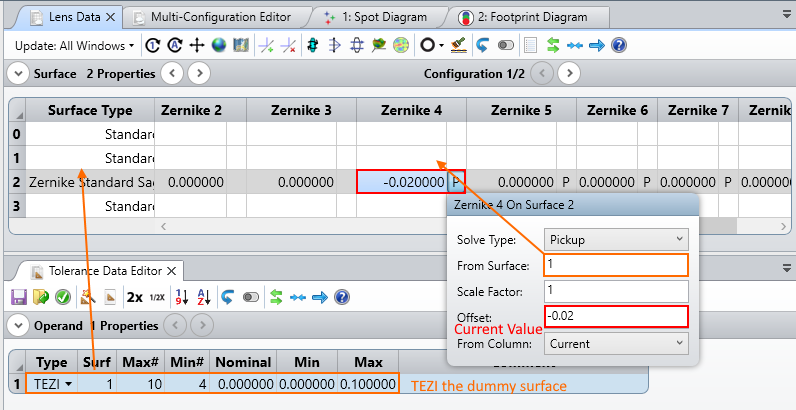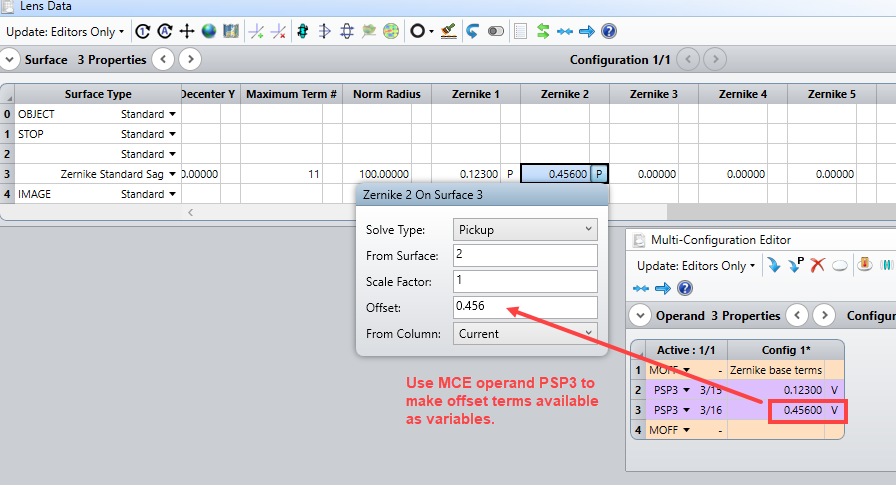I am trying to tolerance a Zernike for irregularity. I noticed that for other rotationally symmetric shapes, you can use the TEZI operand to introduce irregularity tolerance. This converts the rotationally symmetric shape to a standard zernike surface and introduces the tolerances. But my design has a zernike surface already and I was wondering if there is a way to use the TEZI directly. If not, is there a work around to it?
Extension of the above question : How do you tolerance any freeform surface (extended polynomial, chebyshev etc..) for irregularity? Does zemax have any inbuilt tolerance operand to do the same?
Thanks in advance.
Best answer by MichaelH
View original







